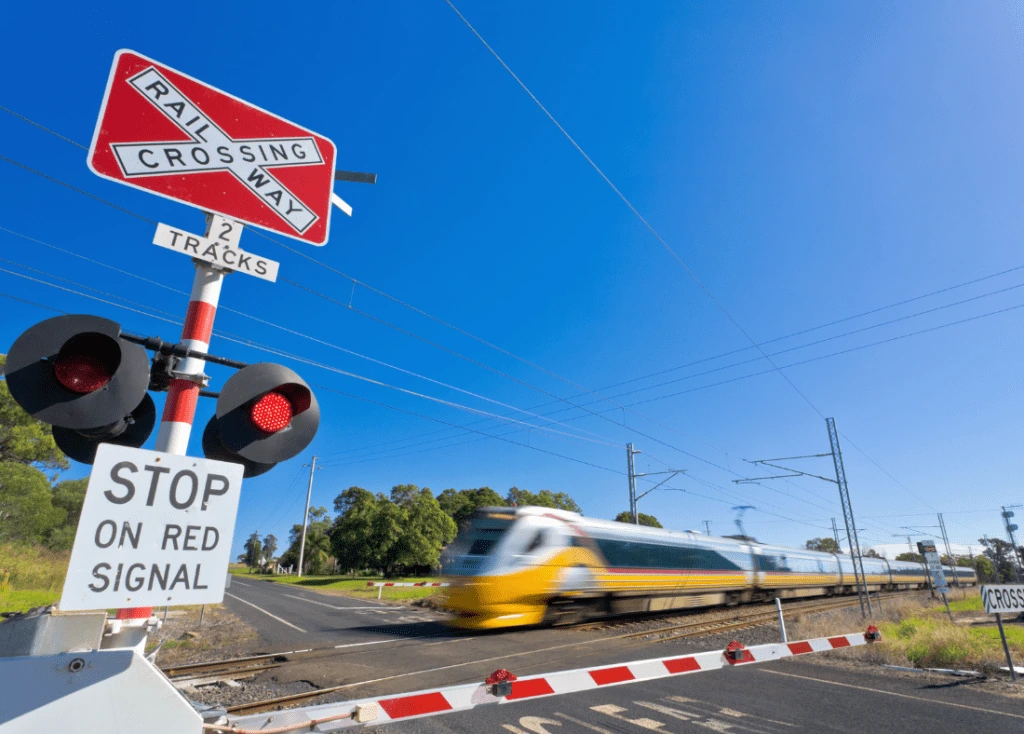The railway crossings on the road are crucial intersections for vehicle and train traffic.
Stopping at railroad crossings, which ensures the safety of drivers as well as train passengers, is not only a legal requirement but also a crucial practice.
The importance of stopping at railway crossings
It is impossible to overstate the importance of stopping at railway crossings, which directly correlates to preventing collisions that could be catastrophic and saving lives.
First, the law requires drivers to stop at railroad crossings. This is part of the basic principles of road safety. The law requires that drivers stop completely when they approach a railroad crossing. This is true even if there are no visible trains. The legal requirement to stop at railway crossings is a vital measure for reducing the likelihood of an accident and demonstrates the need for drivers to adhere strictly to traffic laws. Penalties for not stopping at railroad crossings go beyond punitive measures. They are intended to deter reckless driving that can have serious consequences.
Stopping at railroad crossings has become a part of the culture of safe driving. This is an act of civic responsibility and commitment to one’s well-being and that of other road users. Coming to a full stop is a symbol of acknowledging potential dangers at the intersection between vehicular traffic and rail traffic. This practice helps to create a more safe and secure environment on the road for all.

Stopping at railroad crossings goes beyond legal or ethical concerns. It is also a visible demonstration of respect for the dangers that trains pose. The massive, powerful trains require a considerable amount of time to stop. Failure to stop at a railroad crossing puts not only the driver’s safety at risk but also that of passengers in the car and even the lives of train riders. This responsibility extends far beyond the driver’s concern and encompasses a broader commitment by society to prioritize safety above expediency.
The imperative of stopping at railway crossings is accentuated by the infrastructure designed to facilitate safe passage. Railway crossings are equipped with various safety features, such as flashing lights, warning bells, and crossing gates. These elements are meticulously designed to alert drivers to the imminent approach of a train and provide them with sufficient time to come to a stop. The synchronization of these warning systems is a testament to the comprehensive efforts made to ensure the safety of road users and prevent collisions at these critical intersections.
Importantly, the act of stopping at railway crossings transcends individual drivers and extends to broader educational and awareness initiatives. Public campaigns, driver education programs, and community outreach efforts all play pivotal roles in emphasizing the importance of complying with railway crossing regulations. By fostering a collective understanding of the risks associated with non-compliance, these initiatives contribute to a culture of safety where stopping at railway crossings becomes an ingrained and non-negotiable aspect of responsible driving behavior.
The unpredictable schedules of trains make stopping at railroad crossings a necessity. The trains do not follow the same schedule as vehicles. Trains are guided by complicated operational factors, which makes it difficult for drivers to anticipate when they might approach a railway crossing. Stopping at crossings is a preventative measure that offers a buffer against the uncertainty of train travel. It also ensures drivers are not put in danger by accidents.
Non-compliance with the law can have serious consequences. Accidents between trains and vehicles can have catastrophic consequences, resulting in death, serious injuries, and property damage. A moving train generates a lot of kinetic energy, which can lead to a serious collision. Stopping at crossings is a crucial barrier that prevents the collision of two powerful forces.
Conclusion
Stopping at railroad crossings has many implications, including legal, safety, practical, and ethical. This is more than a mere requirement; it is an essential part of driving responsibly and with conscientiousness. This practice signifies an unambiguous commitment to safety for not just the driver but also for everyone else on the road. When drivers stop at railroad crossings, it demonstrates the value of collective responsibility for a harmonious and safe coexistence between train and vehicular traffic. They contribute to an ecosystem of transportation where accidents, tragedies, and road user safety are prioritized.
